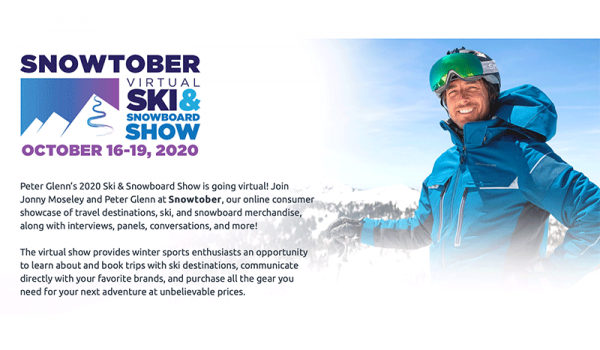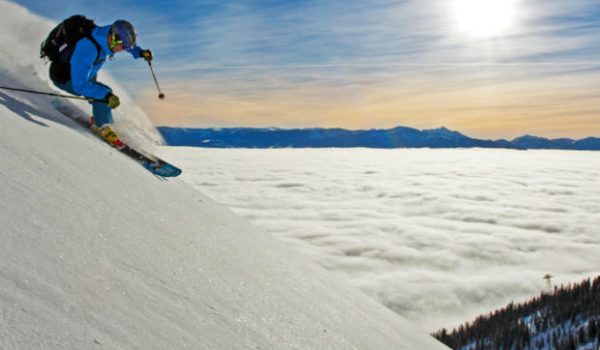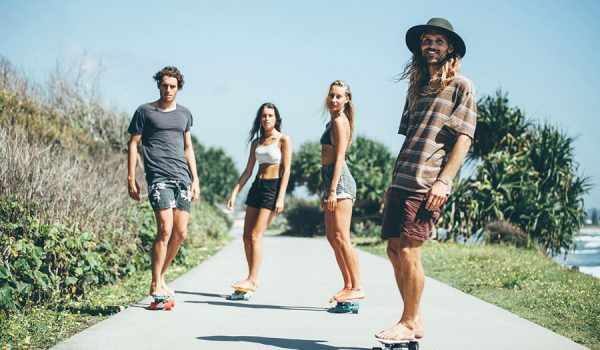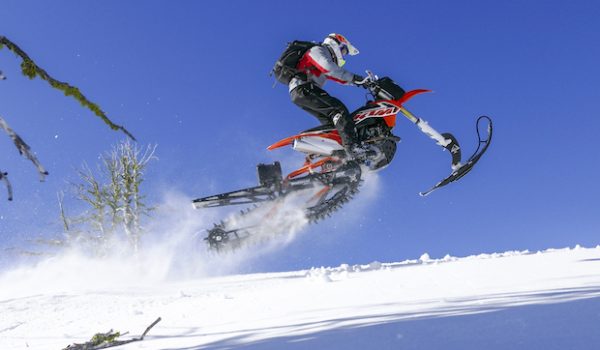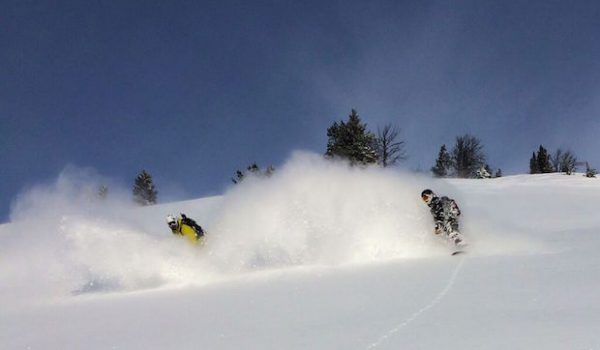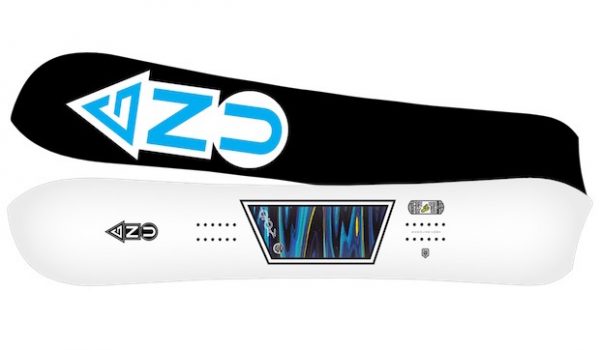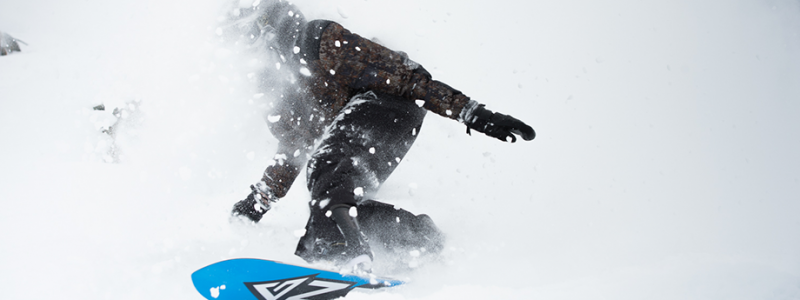
The Best Snowboards
Our expert snowboard reviewers are locals at mountain resorts around the country and perform extensive field tests using detailed scoring criteria to determine the best snowboards for men and women, and backcountry riding.
We divided our snowboard reviews by men and women’s snowboards with sub categories for all-mountain boards and splitboards. The snowboards are scored based on how the board handles, pop and energy, versatility, edge control and sustainability. Snowboards were tested throughout the season at different resorts on a variety of terrain and snow conditions. Only the best boards made the cut into the final test group reviews.
How to Select the Best Snowboard for You
The Best Snowboards by: Monica Prelle
1. Snowboard Buying Basics
There are a lot of different features to look at when selecting a snowboard to purchase, but the basic design features you’ll want to keep in mind are the board’s length, width and weight range, balanced with your ability level and the type of riding that you like to do. Once you determine these key details, it will be easy to narrow down the selection to a few top choices from a variety of snowboard manufacturers. First, we’ll explain why length, width and your weight matter, before moving on to finding the specific snowboard design that will best fit your needs.
Snowboard Length
The size of the snowboard used to be the determining factor in selecting a snowboard, and the length still plays an important role, but newer design technology has changed everything. Ultimately you want a snowboard that is proportionate to your height and weight, and a board that reaches your chin is the general standard measurement. But keep in mind the style of riding you do, your ability and the effective edge also factor in to finding the best board.
Snowboarder Weight
More important than the rider’s height is his or her weight. A snowboard with a stiff flex pattern will be hard for a lightweight rider to control and a softer board will feel out of control to a heavier rider. Your weight determines how a board flexes and will be important when selecting a board. Pay attention to weight ranges on the manufacturer’s specs. Advanced riders can go to the high end of their weight spectrum while beginners will want to stay in the middle or low end of the board’s recommended weight range.
Snowboard Width
The snowboard’s waist width is important to pay attention to as well. You want a board that fits the size of your feet so that you do not have toe drag, but you also do not want to get a board that’s too wide because it will be hard to turn and control. Most snowboards have a standard width, while female-specific boards are typically narrower for smaller riders, and some general snowboards are offered in a wide size.
2. What Type of Riding Do You Like To Do?
The first step in selecting the best snowboard for you is to determine what type of riding you like to do. Ultimately you will have a different snowboard for various riding styles and conditions, but while you build out your snowboard quiver, think about what type of snowboarding you do most often. There are specific demands and snowboards are often designed for each style of riding; from terrain park riding, to groomers, all-mountain and powder.
All-Mountain
Snowboarders who like to ride a variety of terrain and want one board to do it all should look for an all-mountain snowboard. This category is the most popular, and the most of the boards reviewed by our team of expert testers fit in to this category. A snowboard that is highly versatile is a great choice for that one-board quiver, your first snowboard, or an upgrade.
Freestyle and Terrain Park
Snowboarders who are looking to advance their skills in the terrain park and halfpipe will want to look for a snowboard specifically designed for the demands of park riding. Freestyle boards are generally shorter in length, designed with a true twin tip, and are often more playful for jibbing and riding switch.
Freeride and Big Mountain
For the snowboarder who likes steep terrain, off-piste riding and varied terrain will be interested in a freeride board. These boards are designed for advanced riders and typically have a stiffer flex and come in longer sizes. Depending on the snow conditions, freeride boards are often also used for powder riding.
Powder
If you are lucky to ride often and blessed with plenty of fresh snow, you’ll want to invest in a powder snowboard. Powder boards typically have a wider nose and slightly tapered tail, or pin tail, with plenty of rocker to allow the board to float better in soft and deep snow. Snowboards that are specifically designed for powder riding will often have binding inserts that are set back a little bit, rather than centered like an all-mountain board.
Splitboard
A splitboard is a snowboard designed specifically for backcountry riding. The board is cut down the middle, splits into skis, and has binding attachments that swivel to allow uphill travel with traction skins on the bottom. The snowboard is then put back together and rides like a normal snowboard for the descent. This setup requires additional gear including specific bindings for the base plate attachments and snow safety education is recommended. See our extended splitboard information below.
3. Are You a Beginner, Intermediate or Advanced Rider?
Now that you have chosen the style of snowboard you are interested in buying, be honest with yourself and determine your snowboarding ability. While it may be tempting to buy a board that is more advanced to grow into, you are better off buying a board for your current ability and upgrading when the time is right for a more advanced board. And selecting the right equipment will help the learning curve go quicker.
Beginner / Intermediate
If you are just learning to snowboard, or been riding for a few years and just getting the hang of it, you will want a smaller board with a softer flex to make turning easier and the board more manageable. Also, keep in mind that a heavier board will feel cumbersome. Look for something with a lightweight core, a softer flex, and isn’t too long. When standing, the board should not be taller than your chin.
Intermediate / Advanced
Experienced snowboarders looking to take their riding to the next level will want to choose an intermediate or advanced board to continue progression. Advanced boards are often longer in length or have a longer effective edge and typically a stiffer flex pattern. Also, as intermediate and advanced riders improve, they will want to start adding boards for different terrain and snow conditions to their quiver.
4. Do You Need a Gender Specific Board?
Women often wonder if they need to purchase a women’s specific board and the answer is simply: it depends. Ultimately, the snowboard under your feet does not know your gender. Snowboards are designed for specific demands of the slopes and snow conditions. The only thing the snowboard knows about you is your weight and the size of your foot.
Women are generally smaller than men and women’s boards are often offered in a smaller range of sizes, typically with a narrower deck for smaller feet, and a softer flex pattern to accommodate a lighter weight rider. The graphics are also usually stereotypically female. With that said, some snowboards are not gender specific and come in a wide range of sizes and can and should appeal to all riders.
Advanced women and women with an average weight have the option to look at a range of equipment from unisex snowboards to women’s specific designs. The options for advanced female-specific boards are less available, but many women who are looking for a more aggressive board or a stiffer flex can select from the many gender nuetral options. However, more and more companies are designing women’s boards for more advanced riders as the sport continues to slowly progress.
5. Understanding technical features of snowboards
There is a lot of technical jargon to understand when selecting a snowboard. Ultimately, you will have a local snowboard shop employee to help you understand the specific features of the board you want to buy, but this guide will help you get started to understand what to look for when selecting the perfect snowboard.
Shape: Directional, Twin Tip, Hybrid, or Asymmetrical
The shape of the snowboard determines the style of riding or terrain that the board will best perform. Pay attention to the shape of the board to make sure it is designed for the style of riding that you like to do.
Directional Snowboards
Directional boards are designed to snowboard in one direction: forward, or downhill. These boards are often stiffer and/or narrower in the tail than in the nose, which is why they ride best in one direction. These design style is most common for freeride or big mountain boards.
Twin Tip Snowboards
Twin tip, or true twin snowboards should have the same nose and tail measurements and are designed to be ridden in either direction. Think riding switch for fun, or park tricks. Twin tip features are usually found in freestyle or terrain park boards because the ease at which they ride in either direction allows for easy maneuvering.
Directional Twin Hybrid
Snowboard designs can often combine features of the snowboards. Some freestyle boards use the best of both shape features and offer a twin tip shape with a directional core, meaning the tail has a softer flex pattern.
Asymmetrical
Asymmetrical boards are the latest and maybe greatest in snowboard shape technology. Boards are designed for a goofy or regular foot rider and the shape is thoughtful of a snowboarder’s stance on the board. Asymmetrical designs are still new and early designs have had great reviews.
Edge Control: Effective Edge and Serrated Edges
The snowboard’s edge is a major determining factor of how much control a rider has on the snow. Two of the most common edge features to consider when buying a board is the length of the effective edge and the design of the edge itself.
Effective Edge
The length of the board used to be the main determining factor of selecting a snowboard, but new technology makes the effective edge a more important technical feature to consider when buying a board. The effective edge is essentially the length of the snowboard that is in contact with the snow. A board with a longer effective edge will be more stable and handle better at higher speeds. A board with a shorter effective edge is easier to turn.
Serrated or Wavy Edge
Magne Traction is the serrated edge technology designed by Lib Tech Snowboards and Mervin Manufacturing. The edge is wavy, like the edge of a serrated knife, and offers more contact points with the snow. This allows for greater control in all kinds of snow conditions, but performs exceptionally well in variable conditions. Many other snowboard companies have followed suit and offer variations of the serrated edge design.
Flex Pattern
The flex of the snowboard is important in that it determines how well and where the snowboard will perform best and for what riders. A soft flex is typically a board for beginner or lightweight riders, while those who are heavier or looking for a more advanced board will want a board with a stiffer flex pattern.
Type of Rocker: Camber, Rocker, and Hybrid
Snowboards are designed with full camber or rocker, or a combination of camber and rocker in a number of different ways. The rocker profile is best recognized when looking at the side of the board, which is basically the snowboard’s back. Depending on the type of camber or rocker, the snowboard beds in or out, or has a combination of the two.
Camber
Traditional snowboards are designed with full camber and even though full rocker boards were the most popular boards a few years ago, today many boards are going back to this traditional style. Camber snowboards arch underfoot from the tail to the nose. This design offers maximum energy return and feels lively underfoot.
Rocker
Snowboards designed with full rocker are nearly the opposite of camber boards. Rocker, which is also known as reverse camber, is curved upwards underfoot from the nose to the tail. This design is considered easier to turn because it is loose underfoot and also performs well in softer snow.
Camber Rocker Hybrid
There are a lot of different variations that combine rocker and camber technologies for snowboards. Rocker-Camber-Rocker boards offer stability in high speeds over variable terrain, but have rocker in the nose and tail, which helps them float better in powder. Camber-Rocker-Camber boards are typically used for fun carving boards and offer great pop and energy return while still having great edge control.
Radius
The side cut radius of the board is the angle to which the edge would make if it continued to make a full circle. This radius determines how the snowboard turns. The smaller, tighter radius makes a snowboard initiate smaller, tighter turns, while a board with a wider angle will naturally make longer, wider turns.
Binding Inserts
Snowboard manufacturers design bindings to match their boards, but most bindings will offer a range of baseplates that can match a variety of boards. Most boards have a four-hole pattern (2×4 or 4×4), which is easy for placing bindings on the board to your preferred stance. The newer Burton snowboards have a channel binding system that requires specific binding plates to adapt. The channel system allows the bindings to slide easily into the desired stance.
6. Pay Attention to Sustainability and Craftsmanship
No matter what gear you are purchasing for the outdoors, it is important to pay attention to how the manufacturers treat the environment in which we recreate. A few snowboard companies have taken the lead to continue to manufacture in North America, and some are making an effort to use recycled and environmentally friendly materials. Snowboards can be made with renewable products, ink free dies, non-petroleum based bioplastics, renewable energy and companies can give back to the outdoors industry by donating to environmental organizations.
7. Find a Snowboard Demo
Now that you have determined the style of riding you want to do, and understand how to select a board based on your ability, the technical features it offers, and the board is made utilizing environmentally friendly practices, it is time to actually buy a board. The best way, of course, is to ride a few boards from different manufacturers that meet your selection criteria.
Snowboard Shop Demos
Snowboard demos are different from basic rentals in that you have the opportunity to test ride higher-end equipment. Rental fleets at shops often are introductory level gear that is not necessarily what you want to purchase. Demos are rented with the purpose of helping buyers test the gear that they may eventually like to ride. Ask your local snowboard shop what demo boards are available and if they offer a discount for purchase. Some shops may waive the demo rental fee if you purchase the board.
On-Snow Demo Days
Many snowboard manufacturers travel around the country to mountain resorts with fleets of demo boards. On-snow demo days often give you the opportunity to test a lot of gear in a short period of time. These demos are often free, or very inexpensive. You’ll most likely need a credit card and driver’s license to test any gear. Once you have selected a few boards that you are interested in buying, check the websites of the manufacturers to see if you are lucky enough to align with their traveling demo days. Or check the events calendar of your local resort to see if they have any demo days scheduled.
How to Select the Best Splitboard for You
1. There is No Good Snow in the Backcountry
The first thing to realize when getting excited about backcountry snowboarding is: there is no good snow in the backcountry. Ultimately, a splitboard will provide transportation to finding stashes of untracked powder, but realistically you will have to work really hard for it and oftentimes will find variable snow conditions. Once you wrap your head around the fact that not every day in the backcountry is endless powder fields, you’ll enjoy the journey and not focus so much on the rewards.
2. Take and Avalanche Education Course
Before you buy a splitboard, or along with it, you’ll want to invest in an avalanche education course. At a minimum you should buy an avalanche handbook, and take the Avalanche One certification from your local avalanche center. It’s important to understand the dangers in the backcountry and learn the skills to make knowledgeable decisions and mitigate risk.
3. Complete your Backcountry Splitboard Kit
The splitboard is the foundation of your backcountry snowboard kit, but you’ll need a lot more gear than just the board. Consider investing in a few other gear essentials to complete your backcountry setup.
Transceiver (or Beacon), Shovel, and Probe
More important than the splitboard, is the avalanche safety gear that you and your partners take with you when traveling in the backcountry or out of bounds from your local ski resort. Always wear an avalanche transceiver (also known as a beacon) and carry a shovel and probe with you. Know how to use the equipment.
Splitboard Bindings
Bindings designed specifically for splitboards take some of the bulk away and act as a more efficient unit with the splitboard.
Collapsible Poles
Ski poles come in handy for the ascent, and you’ll want them to collapse so you can attach them to your backpack for the descent.
Traction Skins
The traction skins that stick to the base of your splitboard in ski mode are what allow you to climb uphill without sliding back down. This is an essential piece of gear that should be purchased with the board for proper fit.
Backpack
A basic snowboard backpack will suffice to carry your extra layers of clothing, snacks, water and avalanche safety equipment. Airbag backpacks offer another layer of avalanche protection.
4. Purchasing the Best Splitboard for You
Determining the best splitboard is similar to finding an all-mountain, freeride or powder snowboard that you would ride inbounds on a resort. The basic snowboard design is the same, with the exception that the splitboard is cut down the middle. The major difference is the splitboard’s hardware adds about 30 percent weight to the board and they are substantially more expensive.
Most splitboards fall into two design categories: powder or freeride.
Unless you have a quiver of splitboards for different snow conditions, most people will want a freeride board designed to handle a variety of snow conditions from powder, to hard pack and spring corn.
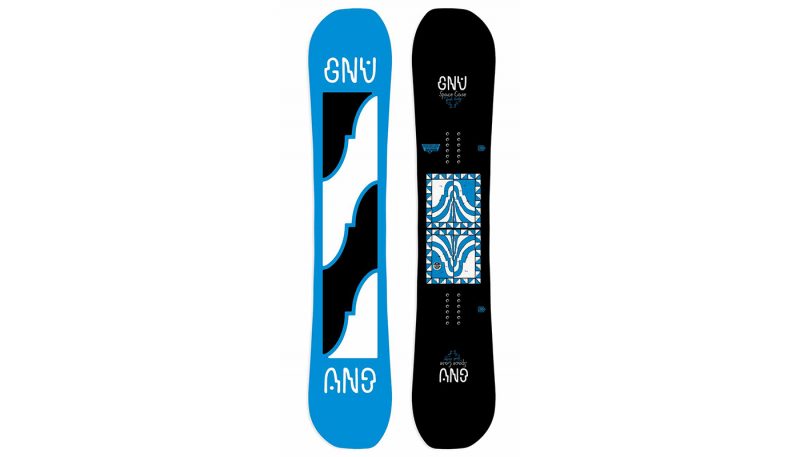
The GNU Space Case is unlike all the other boards in the test thanks to the asymmetrical, all mountain shape. The heel-side edge of this American-made snowboard is shorter than the toe-side edge to maximize the different biomechanics of a heel-side turn vs. toe-side turn. Although GNU makes a few asym boards, it’s not as extreme as the stance-specific Zoid (available in regular and goofy models), a board we reviewed, love, and still has a place in our quiver. Softer than other boards in this test, it’s for riders who love carving turns, making lots of them, and utilizing the whole hill as a terrain park.

The Ride Wild Life has one foot in the all mountain world, the other foot in the all-mountain freestyle world. Not a true twin, thanks to a slightly longer nose, the Wild Life loves powder and big carves.

The Lib Tech EJack Knife is built for going big and pushing your limits. Eric Jackson’s pro model, who often goes by “EJack” — thus the name of the model — loves steep fall lines and launching off side hits, lips, and drops. And if you go from powder to chunder, no problem: the EJack Knife can handle it if you can.
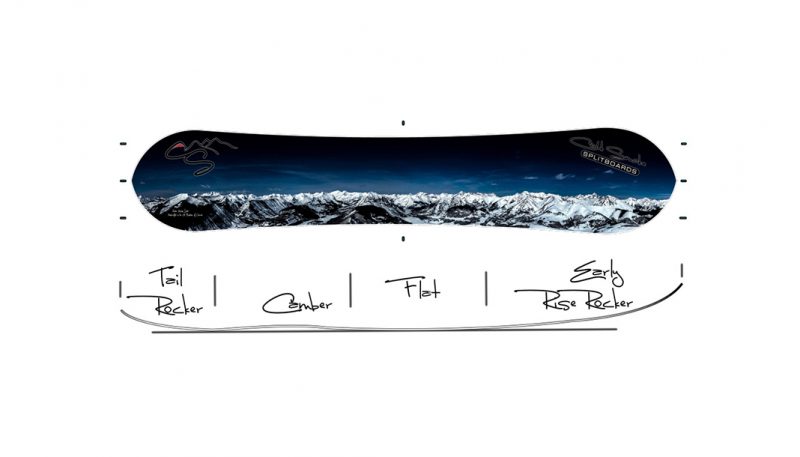
What started as a small garage operation cutting old boards into splits has earned the praise and following of Southern Colorado riders looking to get themselves on big terrain and hunt down the deepest of pow stashes. Ideal for aggressive riders who like some backbone, the Cold Smoke Voodoo is a stable and predictable deck that wants to charge.
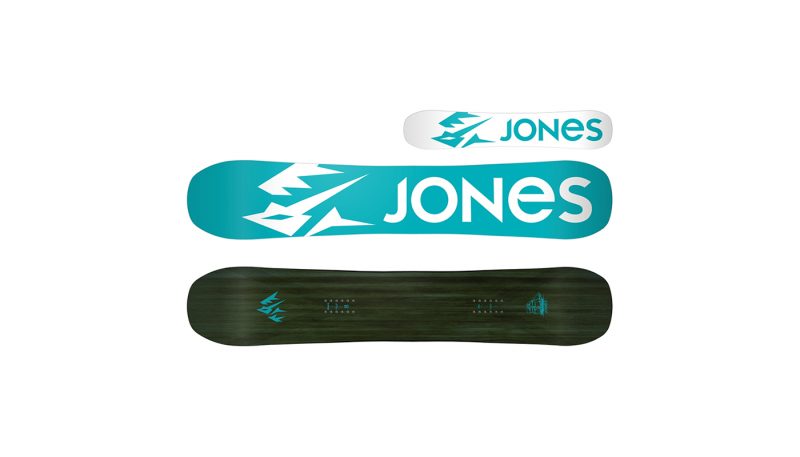
The Women’s Flagship is the ultimate snowboard built for confident women who want to ride advanced terrain. The board is on the most aggressive end of the spectrum for women’s riding and will satisfy the need for speed and a stable ride. Beware of upgrading to this board before you are ready.








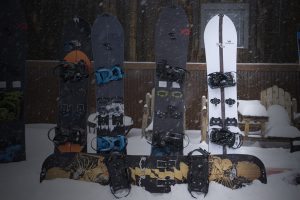

 98
98 